September 19 at 12:30 pm at The Klau Library, Hebrew Union College
Talk and Exhibition about “Imaginary Creatures” in literature and art from antiquity to the renaissance.
We are ushering in ‘the spooky season’ together with HUC by co-organizing a book (with four coins) exhibition and talk: “Creatures in Medieval and Early Modern Books” (featuring tales and descriptions of “imaginary creatures” in ancient, medieval and renaissance Pagan, Jewish, Islamic, and Christian book art). Opening lecture by Christopher Platts, Assistant Professor of Art History, DAAP. See also https://libraries.uc.edu/libraries/classics/about/exhibitions.html .
In order to sign up for the HUC lecture, please use this link: http://huc.edu/libraryseries
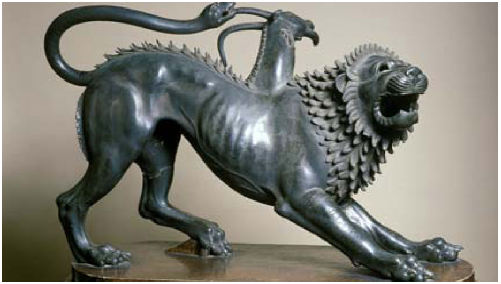
The ‘Chimaera of Arezzo’ from ca. 400 BCE, an Etruscan bronze sculpture, now in Florence, Italy (the sculpture is not at HUC, only in books); a hybrid lion creature from Lycia (in present day Turkey) with a goat head sticking out from her (although with a mane) back and a snake for a tail, an immensely popular figure in ancient literature and art who saw a revival during the renaissance. As usual, she was killed by one of many imaginary creature-slaying heroes as was Medusa, the woman with live snakes in her hair and whose countenance would turn people to stone if looking directly at her (featured in the exhibition), and the Lernaean Hydra (snake) with a hundred heads (featured in the exhibition), and many others in Greek and Roman mythology, with countless predecessors and successors of dragon-slayers in Mesopotamian, Persian, Jewish, Christian, and other cultural myths. This disdain for (female) dragons is in sharp contrast to past and present Chinese culture in which the dragon is honored and generally associated with the masculine (the emperor) (and the phoenix, an imaginary bird, also featured in the exhibition and popular in many western and eastern cultures, represents the feminine, the empress; in Homer, the bird Φοῖνιξ is male and associated with Zeus).
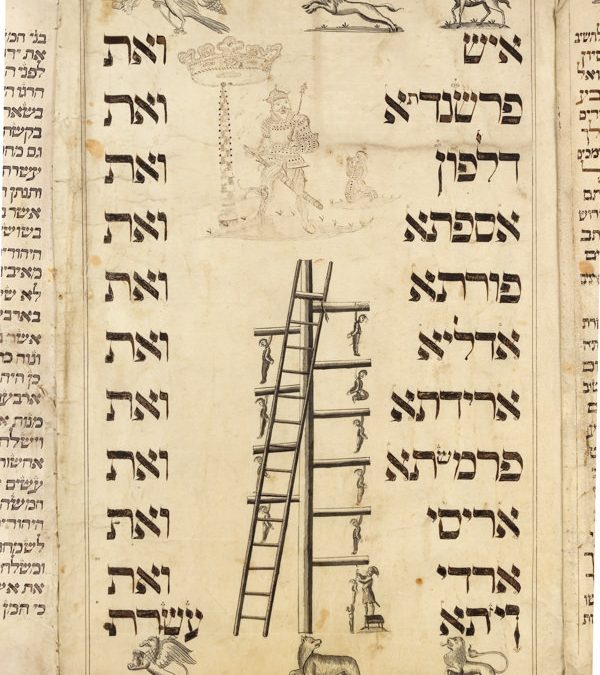
‘Scroll 56 Esther’ (Central Europe, mid-18th c.). This particular Esther scroll depicts several fantasy creatures such as griffons and, as here, unicorns in the central column.

A Flemish manuscript fragment from the 15th century depicting a personification of Death killing a Virgin (and others judging from the two lying in the foreground).

‘Scroll 65.1 Ilan’ (Italy, 15th c.). This scroll contains a detailed diagram of the Kabbalistic Sefirot which was used by students of Jewish mysticism. A dragon protects the medallion of Malkhut, the tenth Sefirot of the Tree of Life, its root, the earth, representing oral law and God’s manifestation in the physical world.
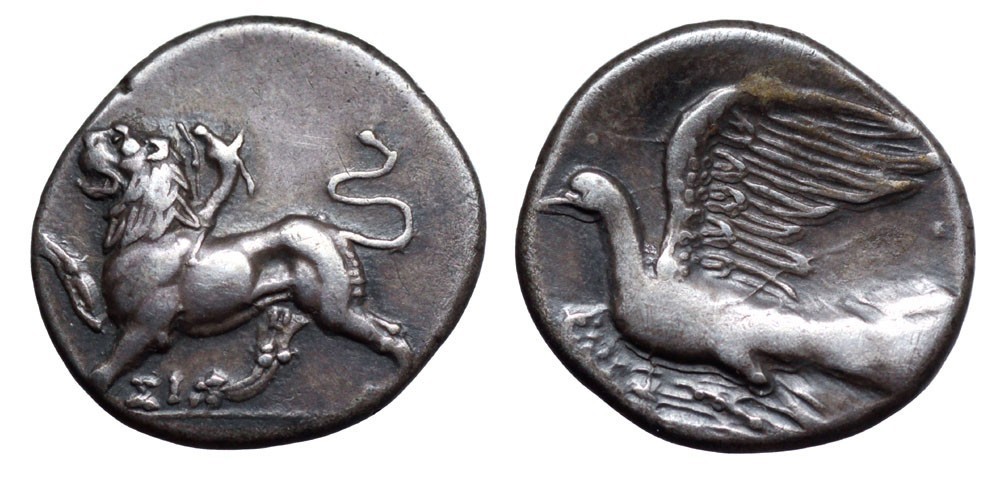
Coin, obverse: Chimaera with paw raised for walking, Sicyon (in the Peloponnese) circa 330-280 BCE, silver hemidrachm.
Update: Both the lecture and exhibition were a success. Professor Platts, DAAP, gave a fascinating talk about imaginary creatures in antiquity and the Middle Ages in secular and religious contexts (as reflected in printed books, manuscripts, and coins). The talk is available on YouTube.
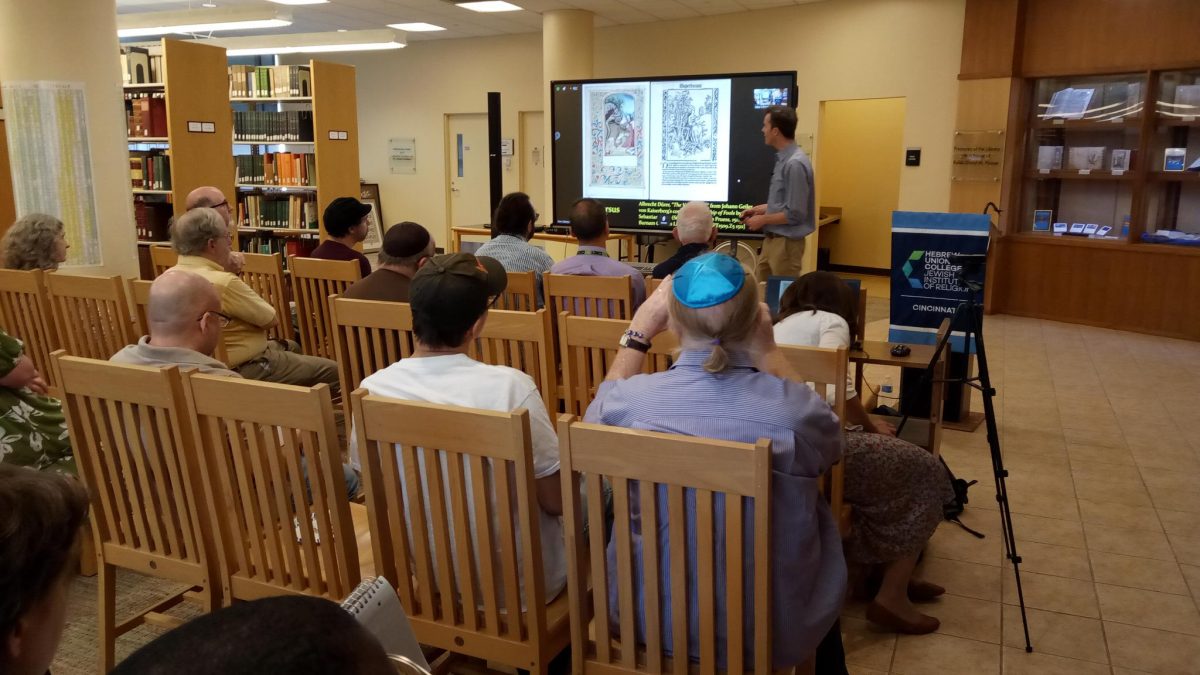
Here Dr. Platts is comparing an image from a 15th c. manuscript and a printed page from “Ship of Fools” from 1511, illustrated by Albrecht Dürer; one portraying a young woman being pierced to death by a personification of Death seated on a cow; the other a vain woman visited by a demon which she does not notice as she is absorbed in her own image in a mirror. Both items from the Burnam Classics Library were included in the exhibition, seen in part to the right.
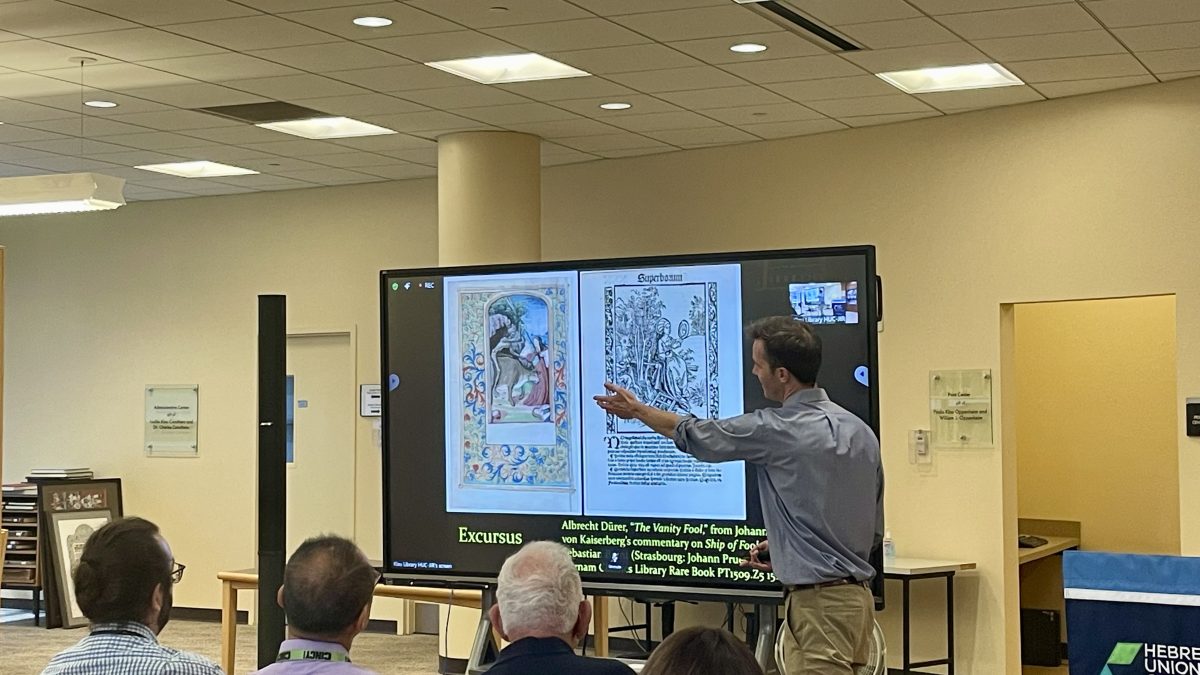
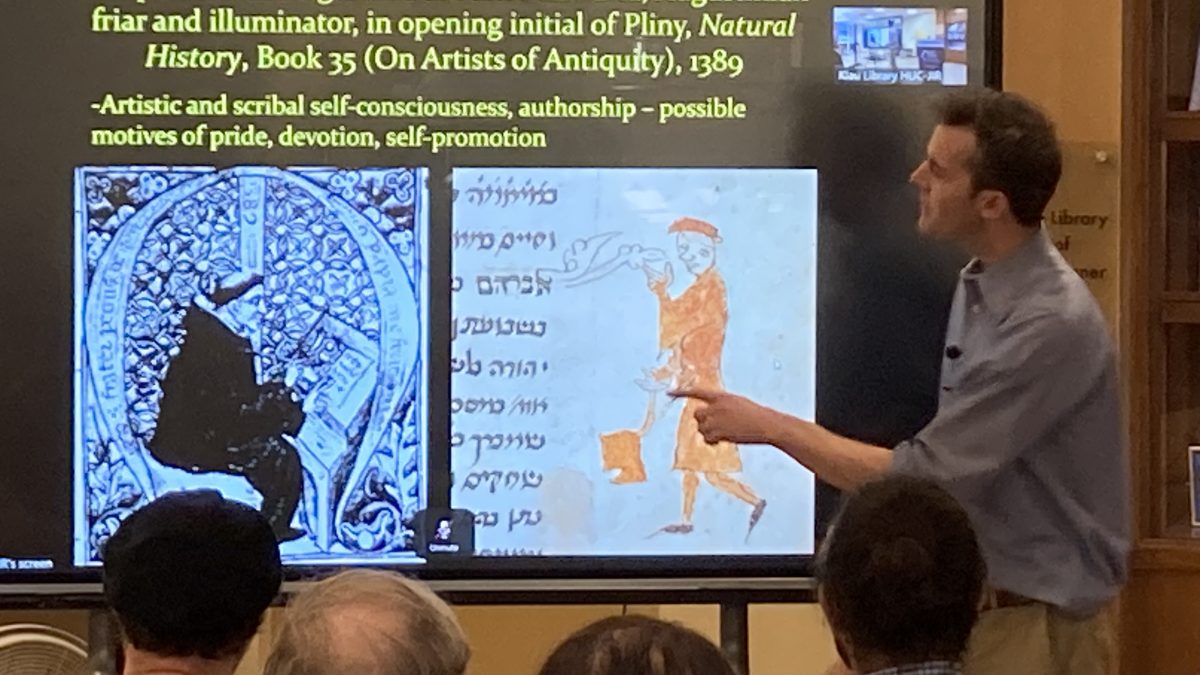
These images from the late 14th century resulted in amusement as an audience member was wondering why the illustrators’ self-portraits in the Christian and Jewish manuscripts were of such different quality. Were Christian monks in this period trained artists? Indeed, talented monks in scriptoria were in fact trained to illuminate manuscripts although this particular illuminator who painted the image to the left may have been a cut above the rest. The Jewish illuminator seems to have had a sense of humor, though.
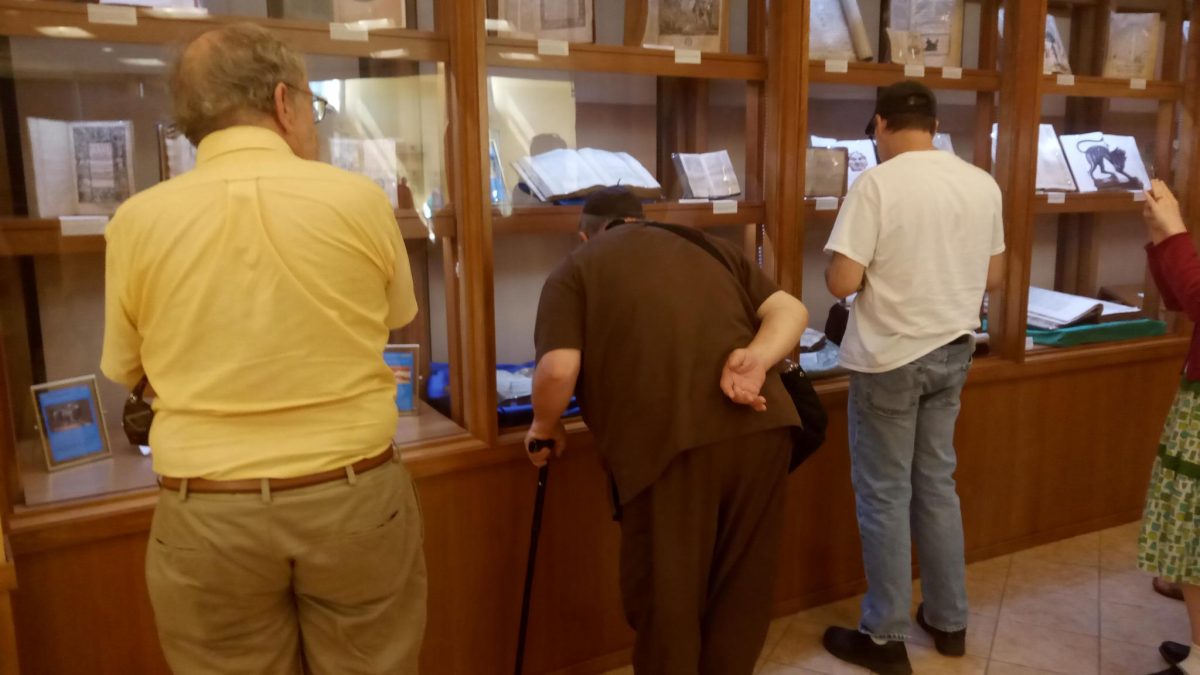
Attendees examining the exhibition. The beautiful design and organization were the work of Abigail Bacon, reference librarian at the Klau Library, HUC.
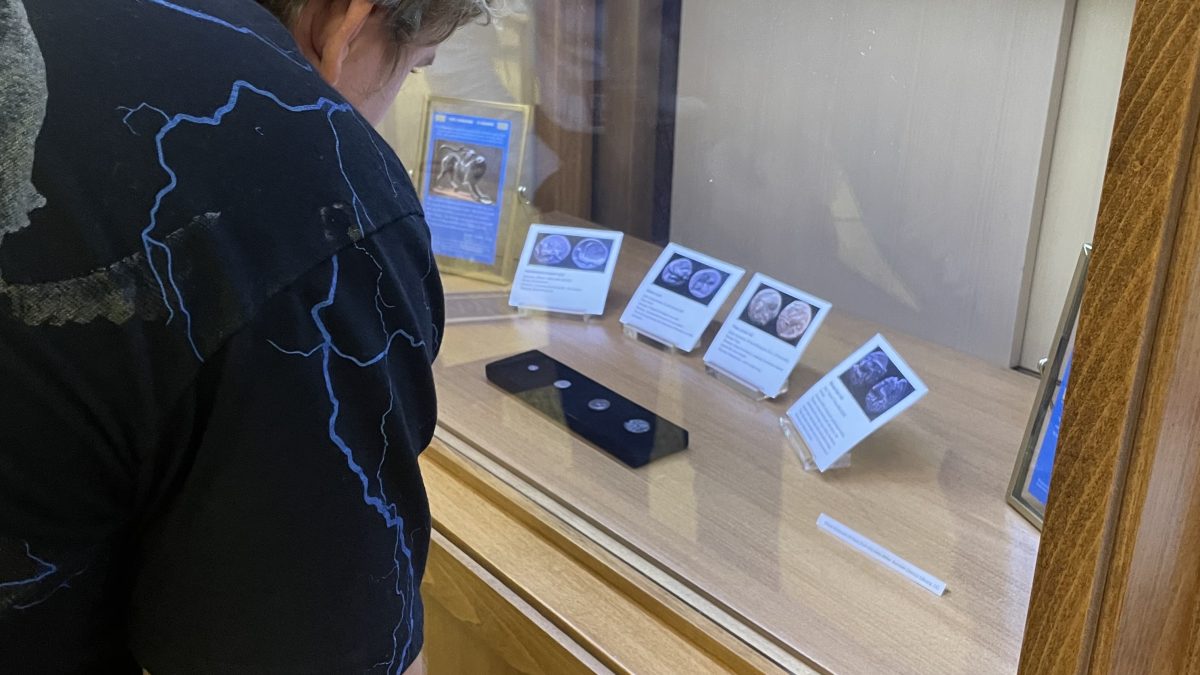
Attendee examines the ancient coins with a gryphon (a fantasy bird), a hippocamp (a sea horse monster), the Chimaera (lion, goat, and snake in one), and Chrysaor (a winged boar and a son of Medusa and brother to Pegasus, the winged horse).
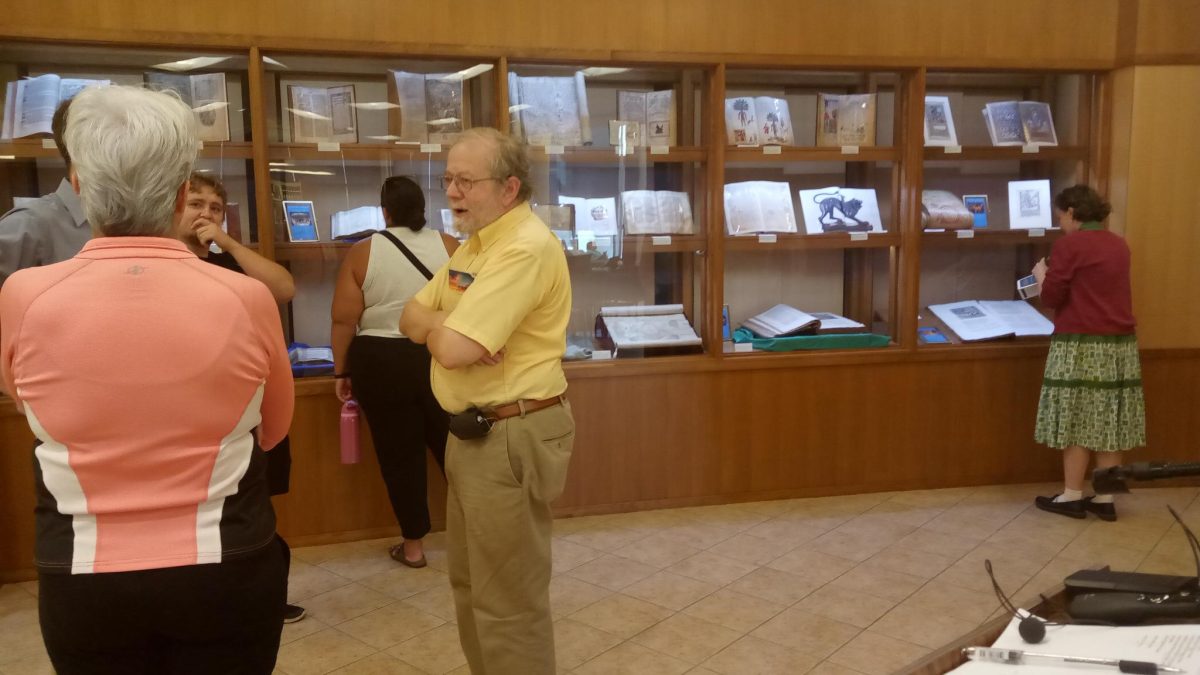
Lively discussions afterwards.
November 8 at 6:30 pm at The Mount Auburn Presbyterian Church.
Music performance of “Uproot: Greek Refugee Songs from Asia Minor” with the Greek Kombos Collective.
As a follow-up to our successful event and exhibition last spring to commemorate the many Greek refugees from Asia Minor following the Greco-Turkish War with oral histories, letters, documents, and artifacts such as garments and dolls made by refugees, the library, in cooperation with the Greek School and the Greek-Orthodox Church, is organizing a music performance with the Kombos Collective narrating the so-called Population Exchange in song and words http://kombosmusic.com/uproot-music-from-asia-minor/. In addition to the performance, there will be an exhibition featuring Greek folk costumes and garments and dolls and purses made by refugees as well as posters from the 1920s used in fund-raising campaigns also in Cincinnati, several of which were organized by Louise Taft, the niece of President William Taft and wife of William Semple, chair of the UC classics department 1921-1950, and a reception with homemade Choriatiki Salata, Spanakopita, and more. How and where to purchase tickets will soon be announced. The cost of tickets will be $50 ($40 for students) as we need to reimburse musicians who are flying in from abroad, their hotel costs, a per diem, the rental of equipment and venue, and food. We are hoping not to accrue financial losses.
Another event which just past, last Thursday, September 5, ‘The Harvest Home Parade’ in Cheviot has been called “the largest small parade in Ohio.”

Two classics library employees participated, and represented the UC and classics libraries along with two beloved Romans, Cincinnatus and Lupa.
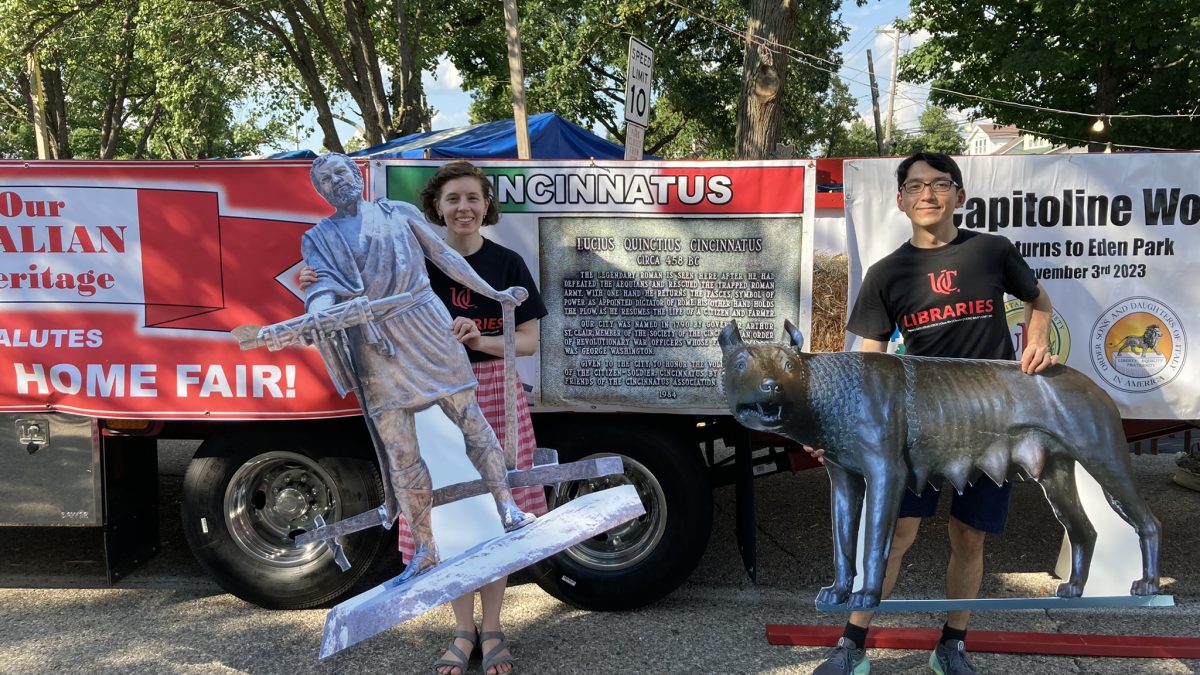
Cincinnatus, Roman army guy and dictator who gave it all up for farming and gave his name to a city in Ohio, with Julie Morris, classics library circulation, stacks, and student assistant supervisor, flutist, photographer, and scholar of “non-elite female performance in 9th-12th century Japan,” and Lupa, female wolf without whom the Roman Empire would not have come about and Eden Park would not be the same, with Yo Shionoya, classics library student assistant, oboist, doctoral student at CCM, cyclist, graphic designer, events planner, etc. Both Julie and Yo have been ‘adopted’ by the Italian American community in Cincinnati.
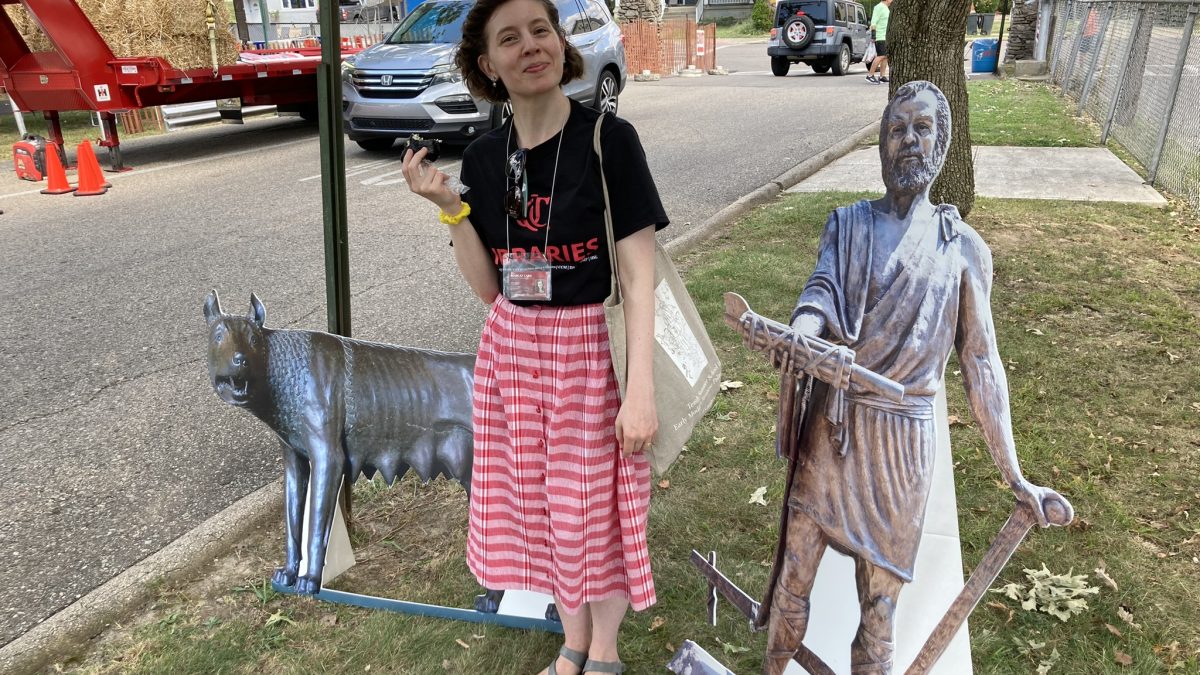

The float was organized by Italian fire brand, and very nice guy, and fan of the UC classics library, Al Salierno dressed in the Italian colors with an image of Lupa on his shirt.

Float celebrating Italian ancestors Lucius Quinctius Cincinnatus and Lupa, the Capitoline Wolf (Romulus’ and Remus’ mom).
